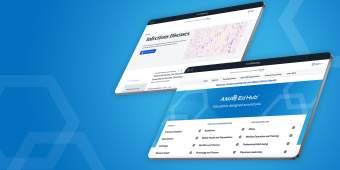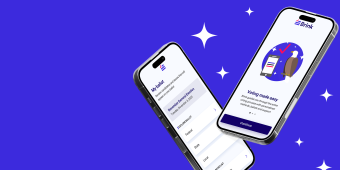The ideation process helps your team find the most compelling solution
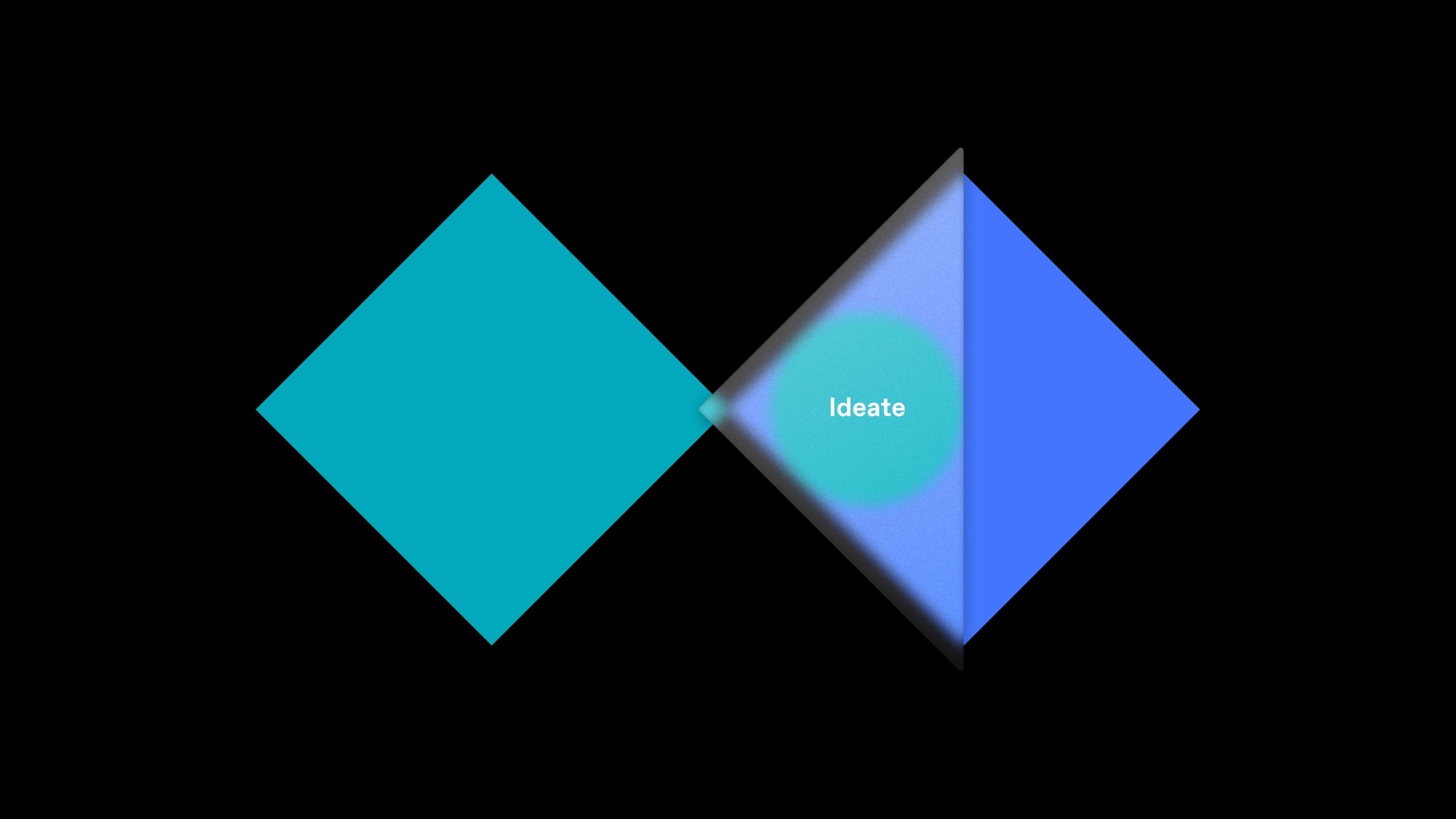
Getting to the ideation process in the double diamond method of design thinking starts to dial up the excitement. By this step, you have had a whole team of different subject matter experts soaking in the details of the user. You all have a clear picture of who you are building for and what problems they are facing.
Now you get to invent things.
The ideation process is the divergent end of the second diamond. This means you’re going to use the problem statement you came to from the first diamond to inspire as many ideas as possible. This part of the process relies on office supplies like paper, sticky notes and whiteboards to lay out all the possibilities for your future design.
It’s followed almost immediately by whittling things down to “define” the ideas you’re going to move forward with. In this half of the double diamond, divergent and convergent thinking happen closely together.
Imposing time constraints frees up ideation process flow
Ostensibly, there’s no end to the ideas your team of subject matter experts can come up with ways to answer the “how might we…” statement. The time limit forces people to get as many ideas down as they can without getting bogged in the details. You also need anonymity. Much like how writing user research questions requires getting your own bias out of the way — the ideation process requires separating names from the ideas. Both the short timeframe and the lack of bias toward certain people leave the room unable to judge the ideas on anything but their merits.
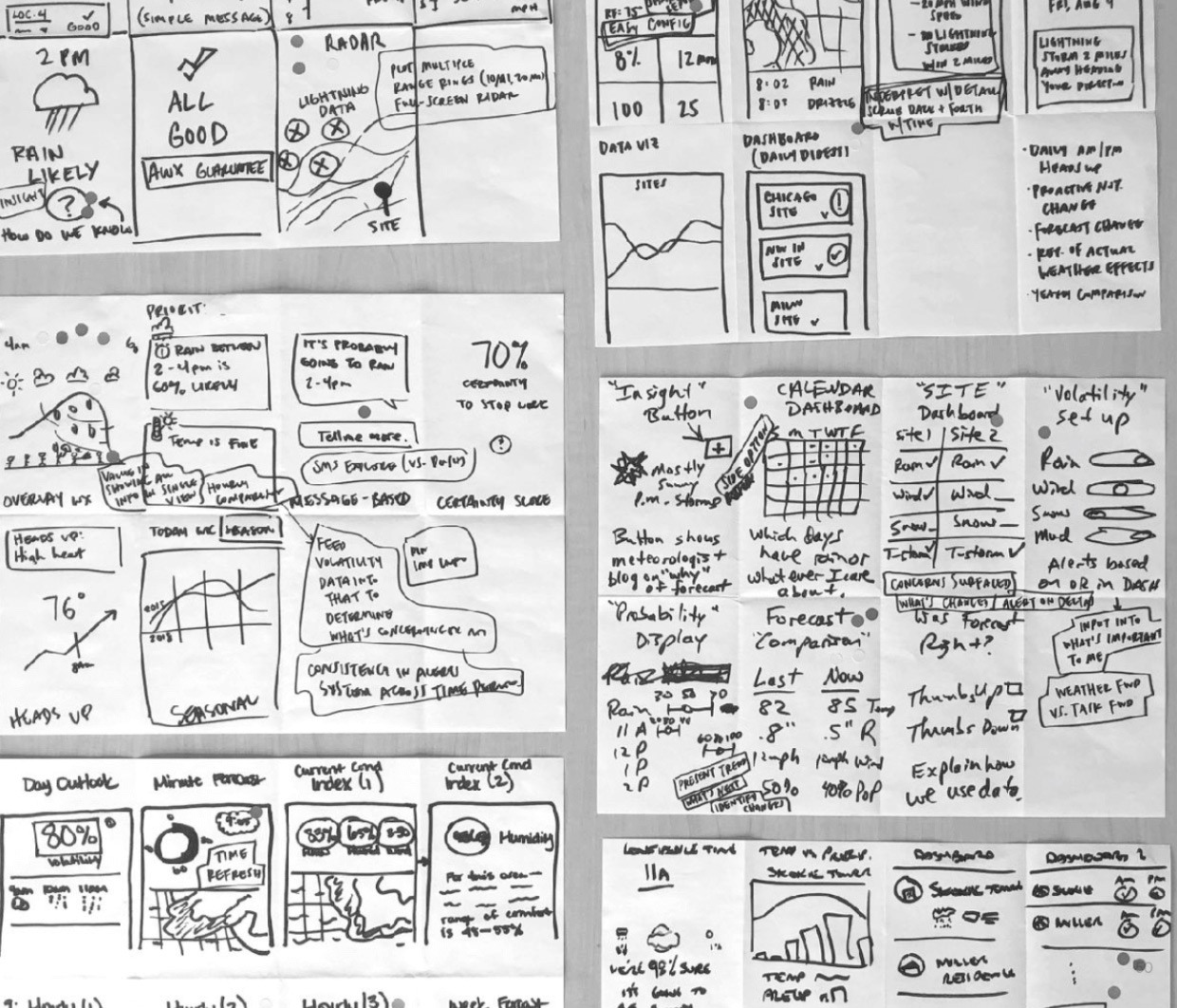
Above is an example of Crazy 8’s designed for a project with Accuweather
One of our favorite methods of ideation process started is called Crazy 8s. Everyone gets a short amount of time to sketch eight different solutions on a paper folded into eight boxes. This is less about getting to a solution as it is a practice run to get the creativity flowing and to inspire each other. It typically can benefit from several rounds — or until the ideas dry up.
Take those ideas and define potential solutions
Once your team has all the potential solutions to the user’s problem statement sketched out, it’s time to figure out which ones work and are feasible.
To do this, everyone should pair up, or work solo if they are comfortable, to review their ideas and refine them into concepts. Discuss which parts to keep, discard or combine for a great story and product. Each pair will draw up several concepts or user flows and put them up on the wall to discuss.
These concepts will be posted without names, and the group will use dot voting to prioritize the most intriguing ideas.
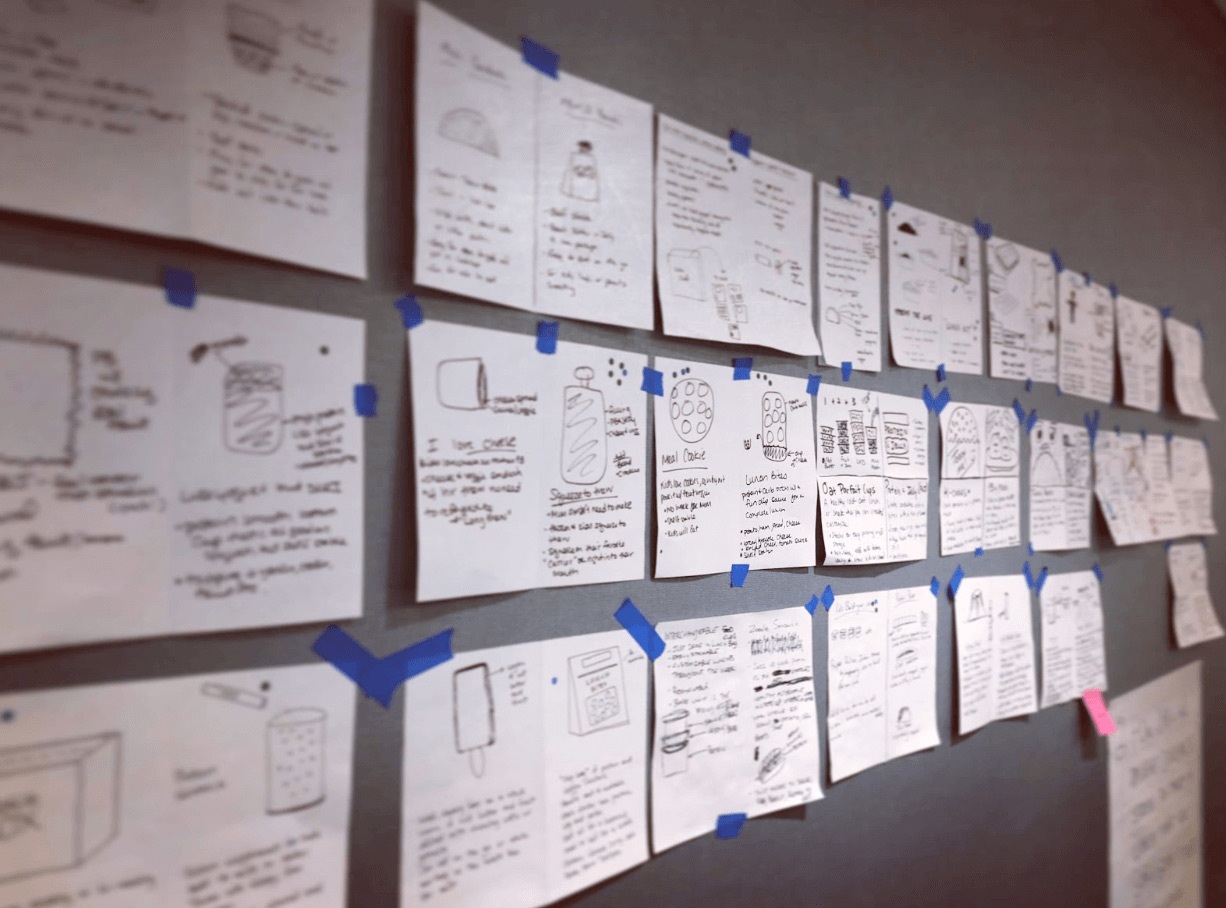
Concepts used in for a product innovation sprint with Tyson Foods
Ideation thrives when democracy is enabled.
The dot voting process lends itself to democratizing the ideation process. It allows you to not only call out your favorite concepts but also the best individual features and/or elements. In the end, there’s no rule saying that your team can’t combine two or more elements into its own specific concept or solution.
Because this is a collaborative creation process, no one person is responsible for the final solution. The team is building a solution together. However, that does not mean that all decisions are made by dot voting.
Often, there will be one team member who is deemed the “decider” and they have the final say in what solution or combination of solutions your team ends up building. In that case, dot voting is for identifying the group’s priorities so that the decider can make an informed decision.
Whatever you build, start the diamond again
Once you’ve finished with the ideate and define, you should have a solution to the problem statement you started the second diamond with. This solution should alleviate a pain point for your user or highlight a positive experience a user already has.
Now prototype that solution and start the double diamond process all over. Each time through will refine your solution further, giving you more clarity and giving your users a better experience. Even if you don’t formally go through each step, the process of expanding and contracting your thinking will lead you to the best solution.
You can see below in the prototyping of a user flow we did for Accuweather, that similar elements made it into numerous steps in the flow:
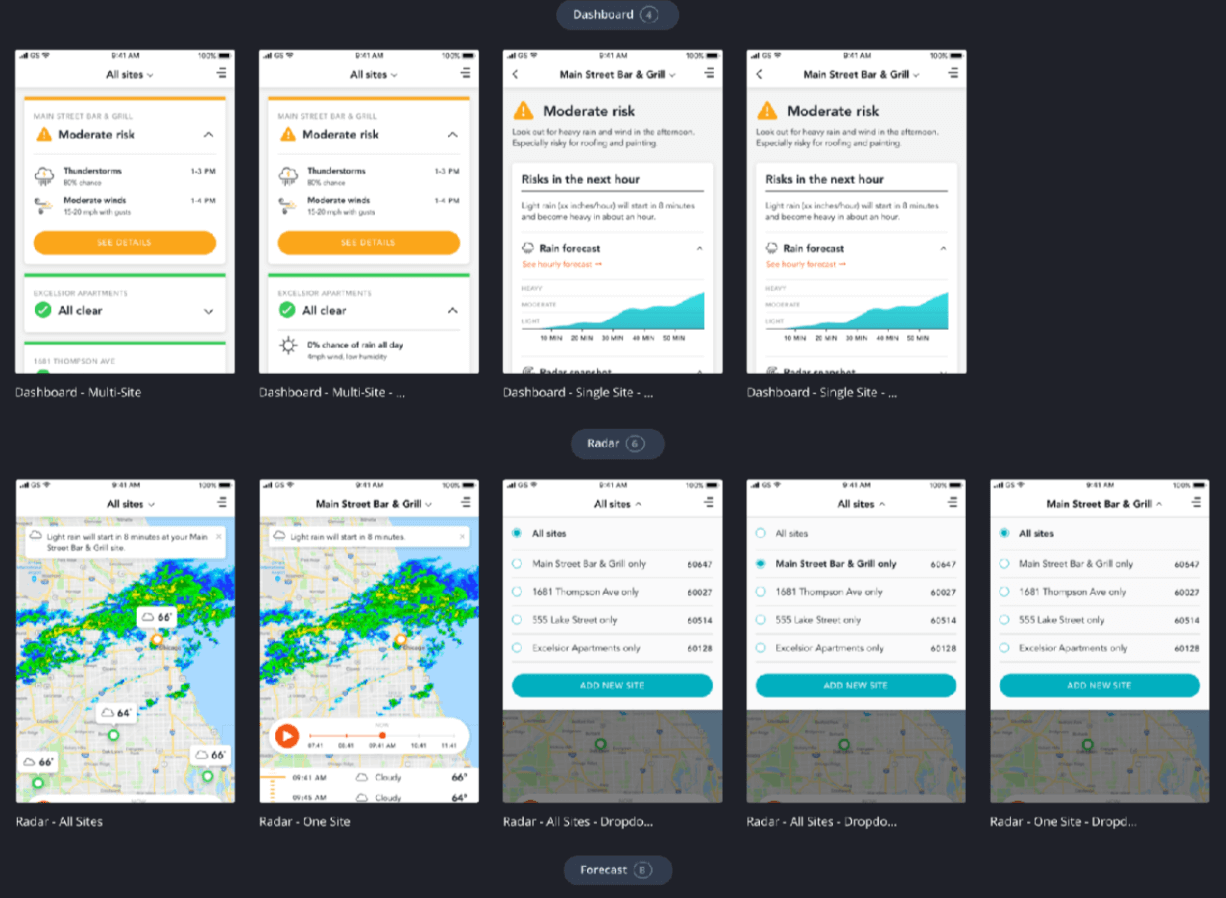
If the double diamond method seems like something your company could use help with — let’s start a conversation.
Published by Product Design in Design

Let's shape your insights into experience-led data products together.
